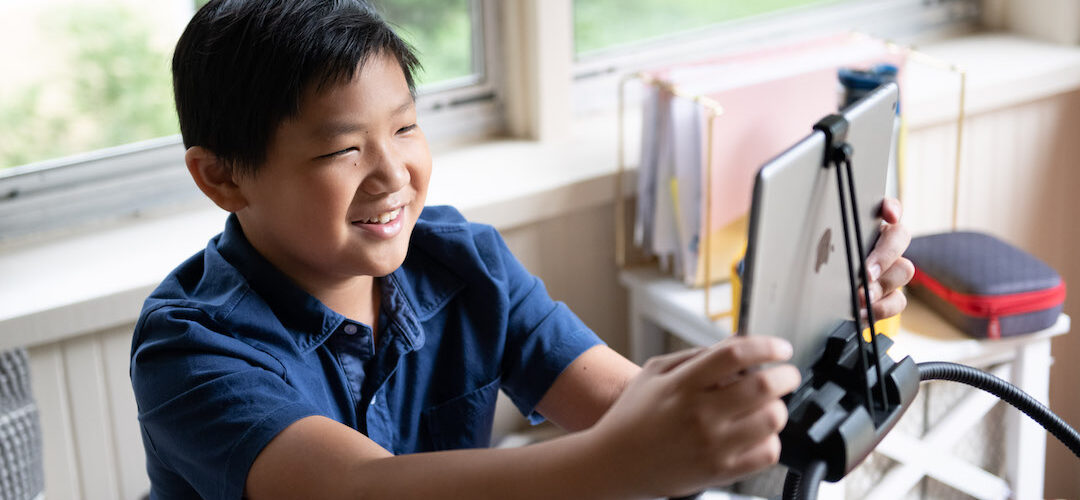September 2020 Research Rundown
By Krista Kaput
Welcome to EdAllies’ September Research Rundown; our curated list of recent, relevant research we think is worth adding to the education equity conversation. This month, we are sharing research on:
- How COVID-19 could be exacerbating achievement gaps,
- Distance learning best practices, and
- The link between housing and education.
1. The Economic Impacts of COVID-19: Evidence from a New Public Database Built from Private Sector Data
Opportunity Insights, September 2020
This new study explores the impact of COVID-19 on the economy, looking at a variety of measures, including education. It looks specifically at data from Zearn Math—a tool that offers digital lessons to supplement in-person instruction—used by 800,000 students across the country. While high-income students generally have lower participation rates than middle-and low-income students, this trend flipped during spring school closures due to COVID-19. Participation rates for high-income students increased by 5%, but decreased by 30% for middle-income students and by 52% for low-income students. Moreover, progress through lessons for high-income students increased by 45%, stayed nearly the same for middle-income students, and decreased by 36% for low-income students. These findings affirm concerns that achievement gaps between low-and-middle-income and high-income students are being exacerbated by the pandemic and school closures.
WHY THIS MATTERS IN MINNESOTA
These new data align with other projections, which estimate that students will have lost between one-third to half of what they would have learned in a normal school year. It’s imperative that schools use diagnostic assessments to measure where students are and then use research-backed interventions to meet students where they are and accelerate their learning. Additionally, as schools move between the different learning models—hybrid, in-person, and distance—districts and charter schools must also ensure comparable rigor across different schooling models and should strongly consider prioritizing younger learners, students with special needs, English Learners, and those who face barriers to distance learning at home for in-person services.
Explore the Findings
2. Schooling Covid-19: Lessons From Leading Charter Networks From Their Transition to Remote Learning
Thomas B. Fordham Institute, August 2020
This report summarizes the key actions that the eight leading charter school networks around the country took, which enabled them to effectively and quickly transition to distance learning. These charter networks cumulatively serve over 140,000 students, and all of them serve at least 74% low-income students. From interviewing educators, parents, and school leaders, the author was able to distill and create a list of five action items that were critical to success, and that might help guide other schools in strengthening distance learning:
- Meet students’ social, emotional, and nutritional needs;
- Place technology in the hands of every student and educator quickly;
- Re-create the structure of the regular school day and regular grading practices;
- Reach out to individual students and families on a regular basis; and
- Embrace a team approach to teaching, with a common curriculum at the center.
WHY THIS MATTERS IN MINNESOTA
Throughout the state, schools and districts have had to build their own unique back-to-school plans. This has allowed for customization to local needs, but also means a lot of variability between plans and a significant challenge for local leaders as they build from the ground up. Learning from what’s worked for others can help provide much-needed information to schools and districts.
Read the Full Report
3. Aligning Housing and Education: Evidence of Promising Practices and Structural Challenges
Urban Institute, September 2020
This brief explores the link between housing and education, summarizing the literature, and highlighting promising practices. The research has found that when housing is safe, high-quality, stable, affordable, and located in a well-resourced neighborhood—known as the “housing bundle”—children tend to do better in school and parents have improved mental health. The brief highlights the impact of programs and partnerships dedicated to stabilized housing around the country—including Minnesota’s Homework Starts—on students and families. Recommendations for strengthening these partnerships include:
- Leveraging multifamily housing—like apartment communities—as partners for educational supports;
- Pursuing joint success measures and aligned decision making; and
- Housing and education advocates work together to seek policy changes.
WHY THIS MATTERS IN MINNESOTA
Recent data shows that 29% of Minnesota’s rental households are at risk of eviction. And while Minneapolis and St. Paul have both launched programs to help low-income families with housing-related expenses like rent, these programs are maxed out and inaccessible to some families. Bringing education and housing advocates to the same table could ensure stronger program design and more comprehensive policy solutions.
Read the Full Brief

